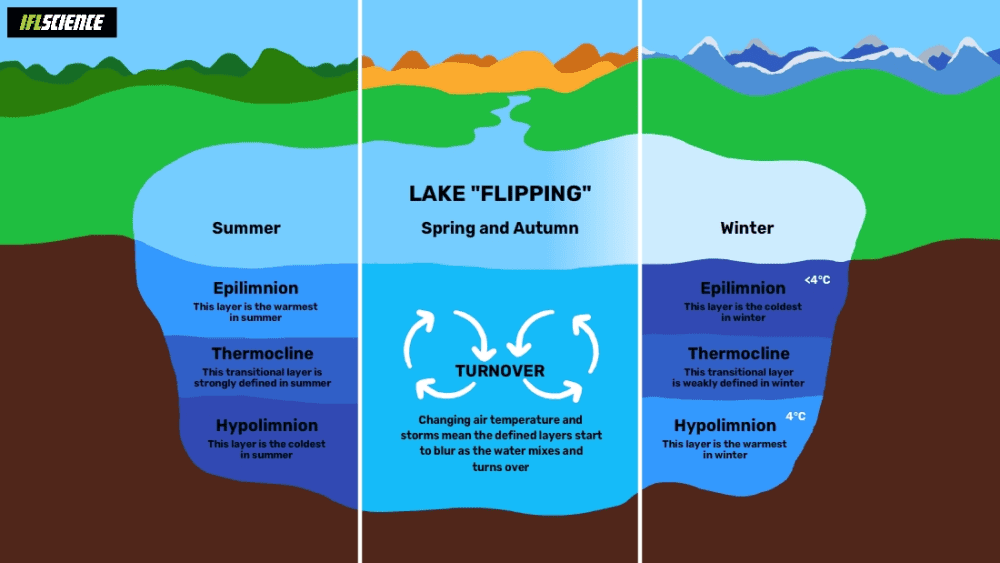Lake Tahoe has reportedly flipped, and while we’d love to report that it’s just stuck the landing on a very wet 360, the realities of lake turnover are a little more nuanced. Lakes flipping like this can happen episodically each year and are a natural and normal phenomenon that comes with the added benefit of giving aquatic animals a fresh flush of oxygen and nutrients.
The flipping, or mixing, of Lake Tahoe was reportedly completed sometime around late February, says UC Davis Tahoe Environmental Research Center (TERC) in a piece for YubaNet. We know this because their research teams have been sampling the lake’s water weekly, which enables them to get data on the water’s quality and health, as well as what phytoplankton are swirling around in the mix.
Lake flipping, more conventionally known as lake turnover, is facilitated by the wind and can see vast quantities of water effectively turn over so that the layers become an even mix. Imagine blowing into a B52 shot and watching its defined layers get all messy. Lake flipping is basically the same, just without all the alcohol.

If lakes could feel, we imagine this would be very satisfying. Image credit: © IFLScience
In lakes, those layers represent different temperatures of water and in true scientific jargon fashion, they have some intriguing and difficult to pronounce names:
- Epilimnion – this layer sits at the top of the water column and is the coldest in winter when the weather up top gets hectic. Come summer when things get a bit balmy, it becomes the warmest layer.
- Thermocline – the easiest to say is also the easiest to place, as the transitional thermocline sits in the middle between the epilimnion and the…
- Hypolimnion – this is the bottom layer and like the epilimnion its temperature changes depending on the season. In the summer, the hypolimnion is where the coldest water pools, but come winter it’s home to the warmest water.
The flip, as you can imagine, is pretty slow. Driven by wind and air temperature changes, it sees the defined layers of the lake (known as stratification) disappear as water mixes and turns over. Once the turnover is complete, the lake will theoretically be the same temperature top to bottom.
Flipping began in fall for Lake Tahoe, and saw the surface water cooling and sinking further and further as the seasons progressed into the winter. By February 1, mixing had extended to a depth of 150 meters (500 feet), but just over a month later on March 3, the entire lake had flipped. Buoys deployed to the top and bottom of the lake were reading as the same temperature by February 28, which is when the mixing really gets going.
Some degree of lake turnover happens every year, but they don’t always achieve a full flip. This is because the right combination of extreme air temperatures and storms are needed to get the mixing happening all the way from the top to the bottom.
A full flip like Lake Tahoe’s is cause for celebration as it will help to create the best conditions for aquatic plants and animals by redistributing nutrients, oxygenating the water, and keeping the bottom cool in the face of geothermal heating. It can also be fun for human observers, as the lake gets much clearer after a flip meaning you can see to a much greater depth.
If you want our advice, take a good look. Everything from shipwrecks to ritual offerings and a 3,000-year-old castle have been found hiding in the murky depths of Earth’s lakes.
Source Link: Lake Tahoe Has Flipped, Here's What That Means